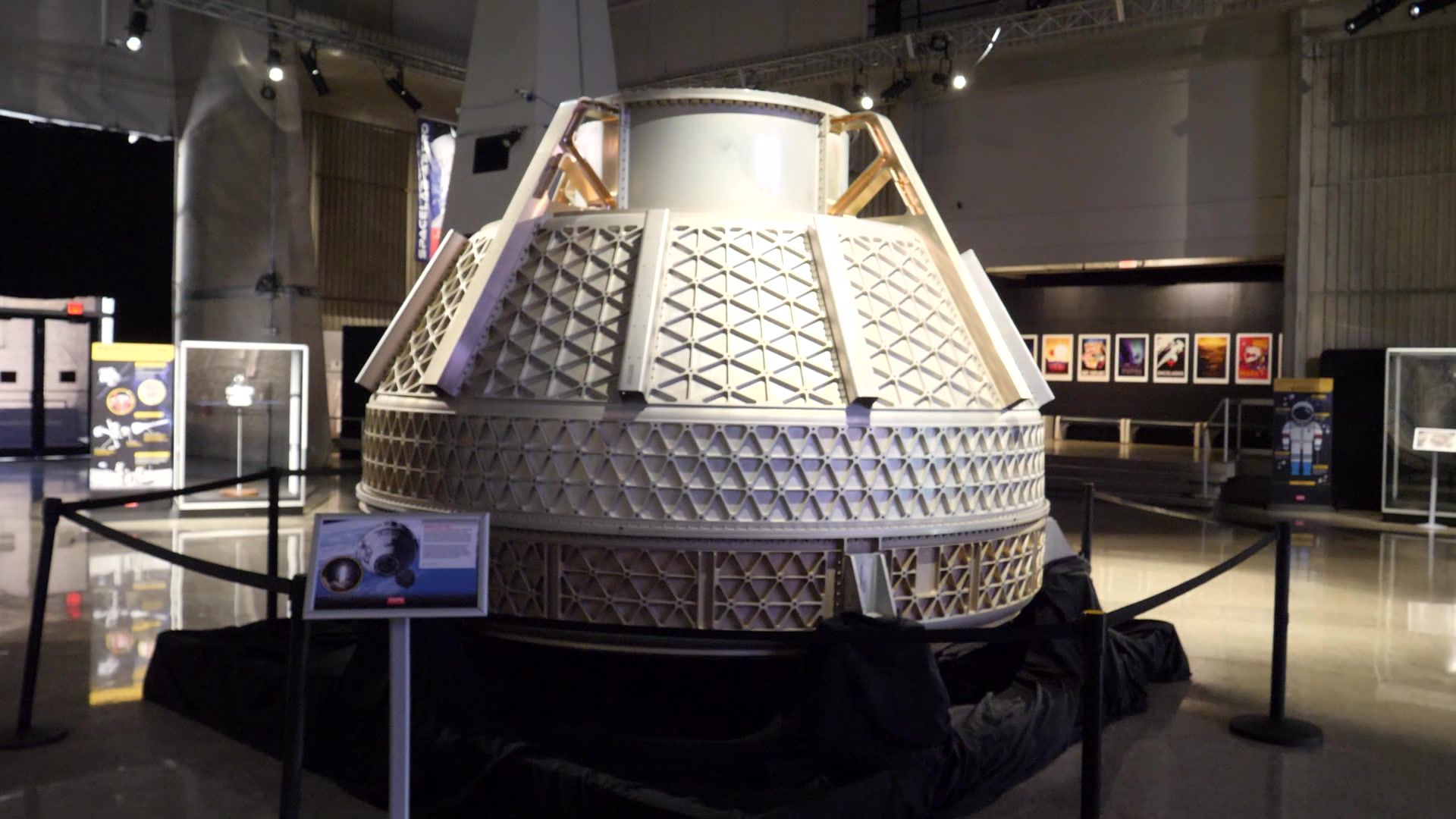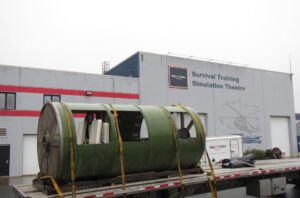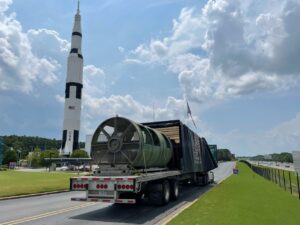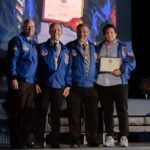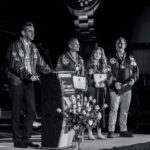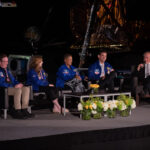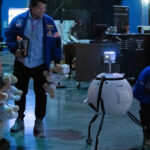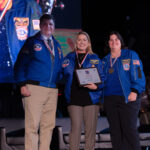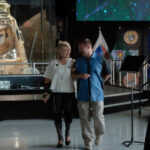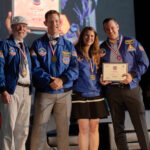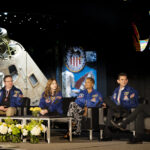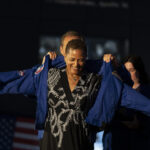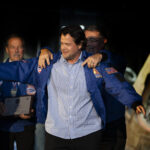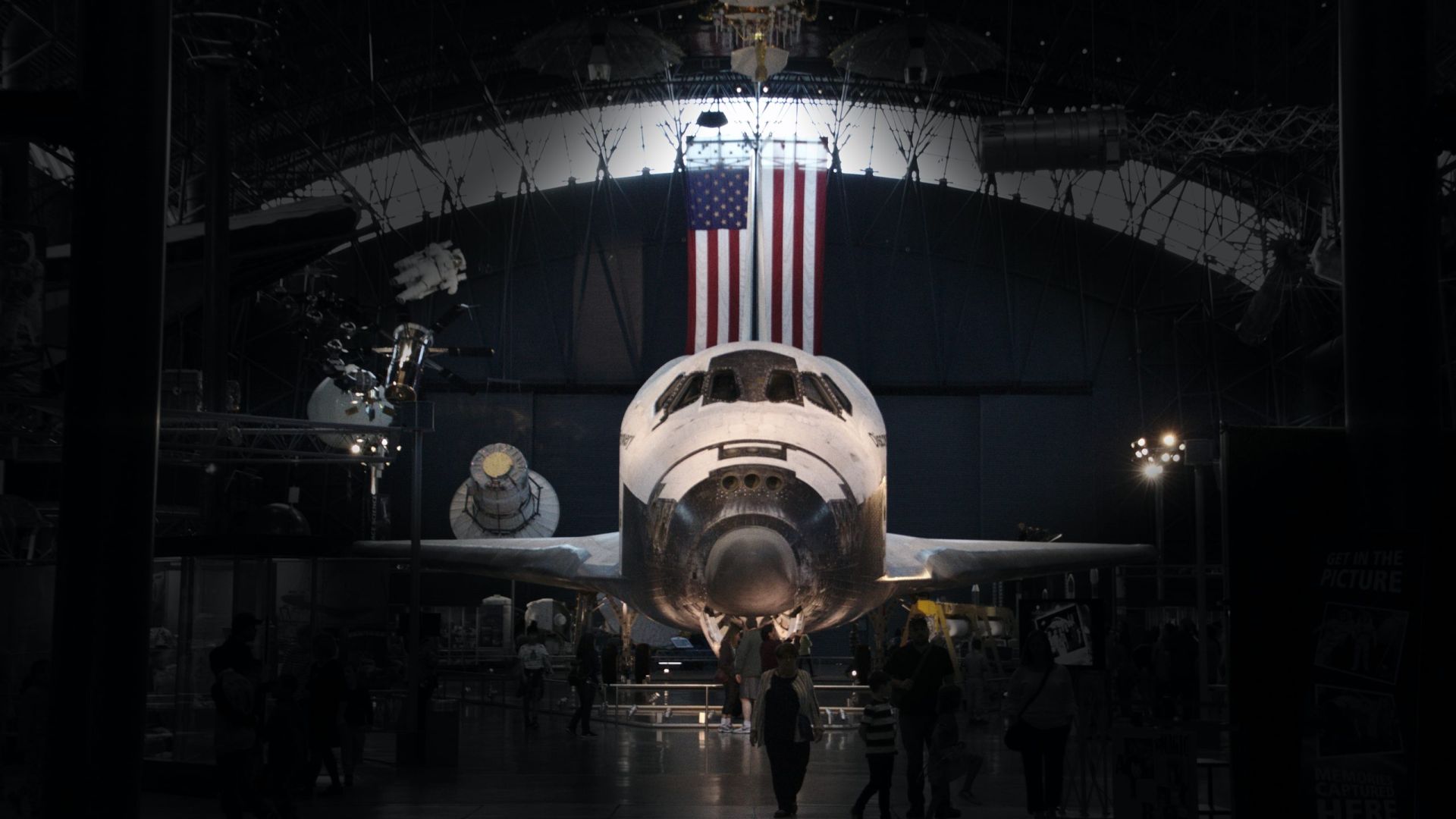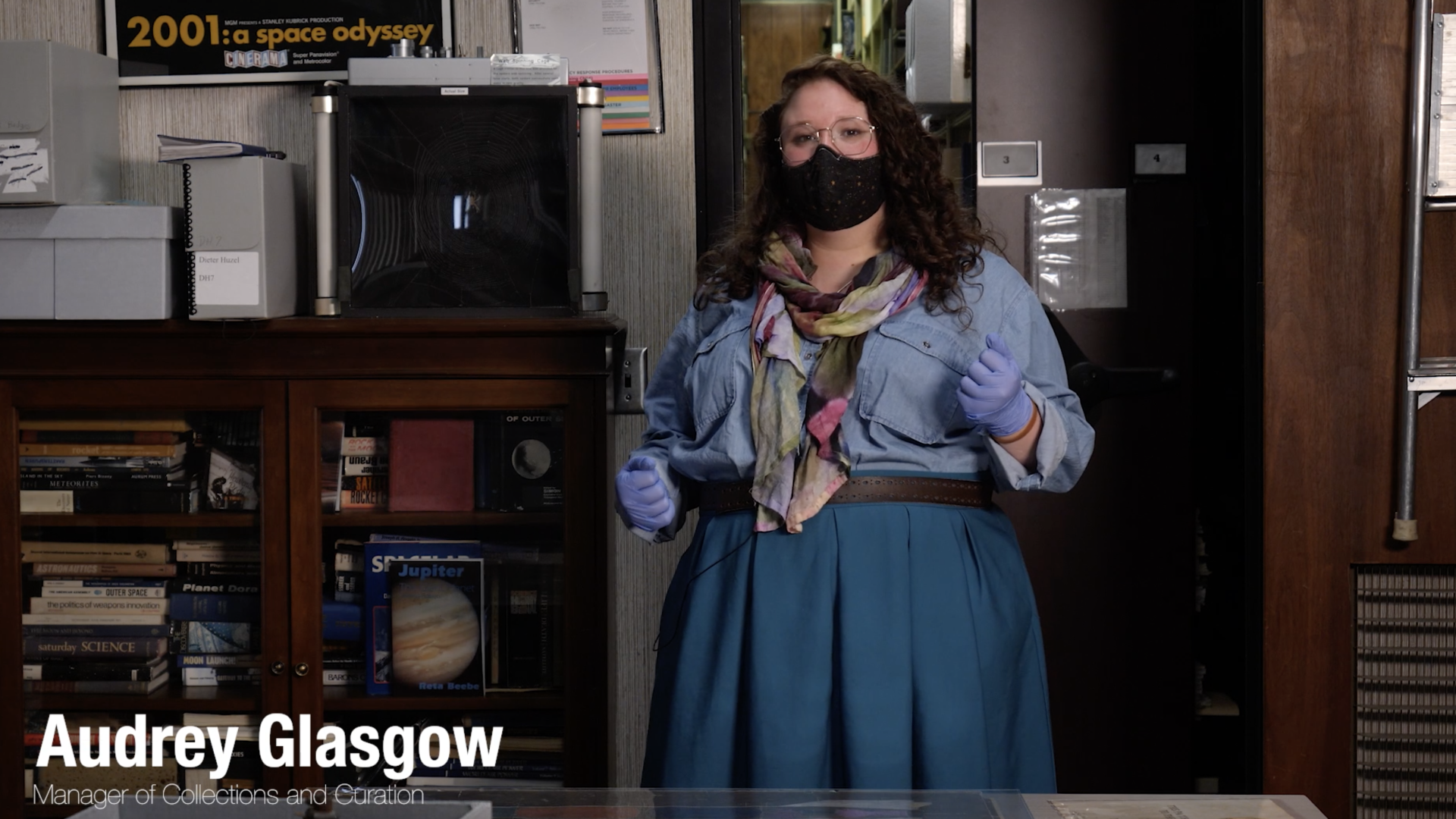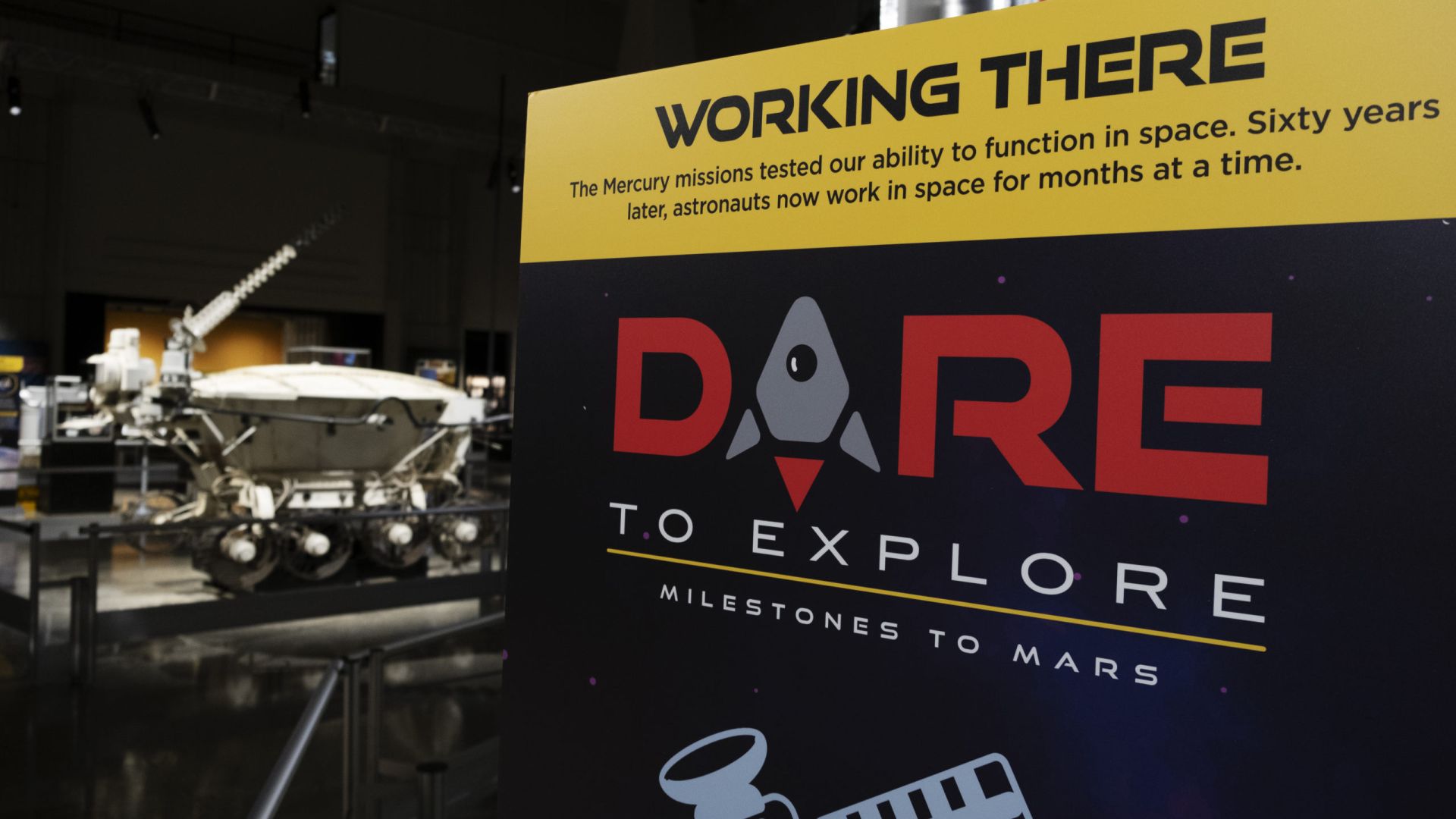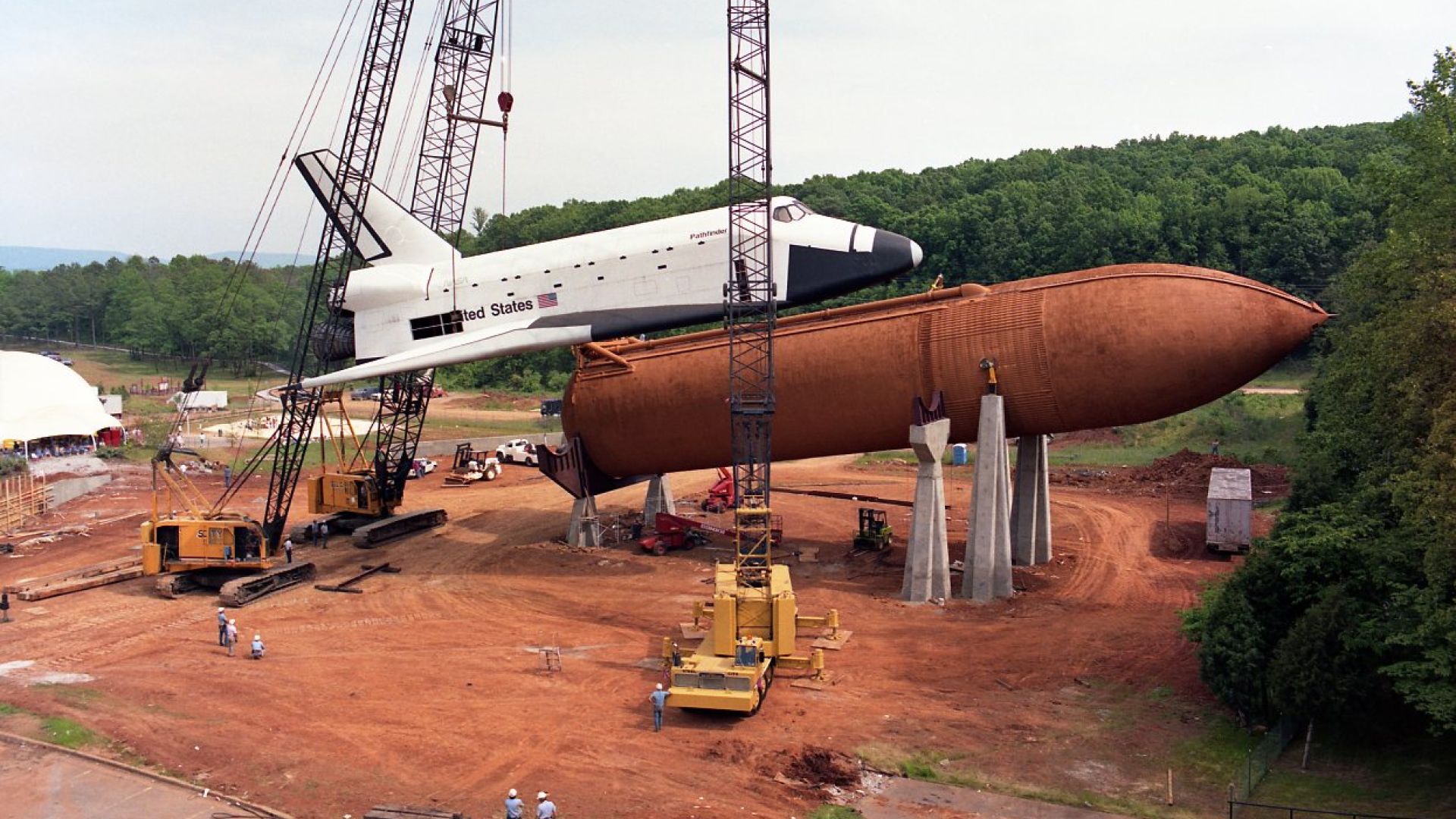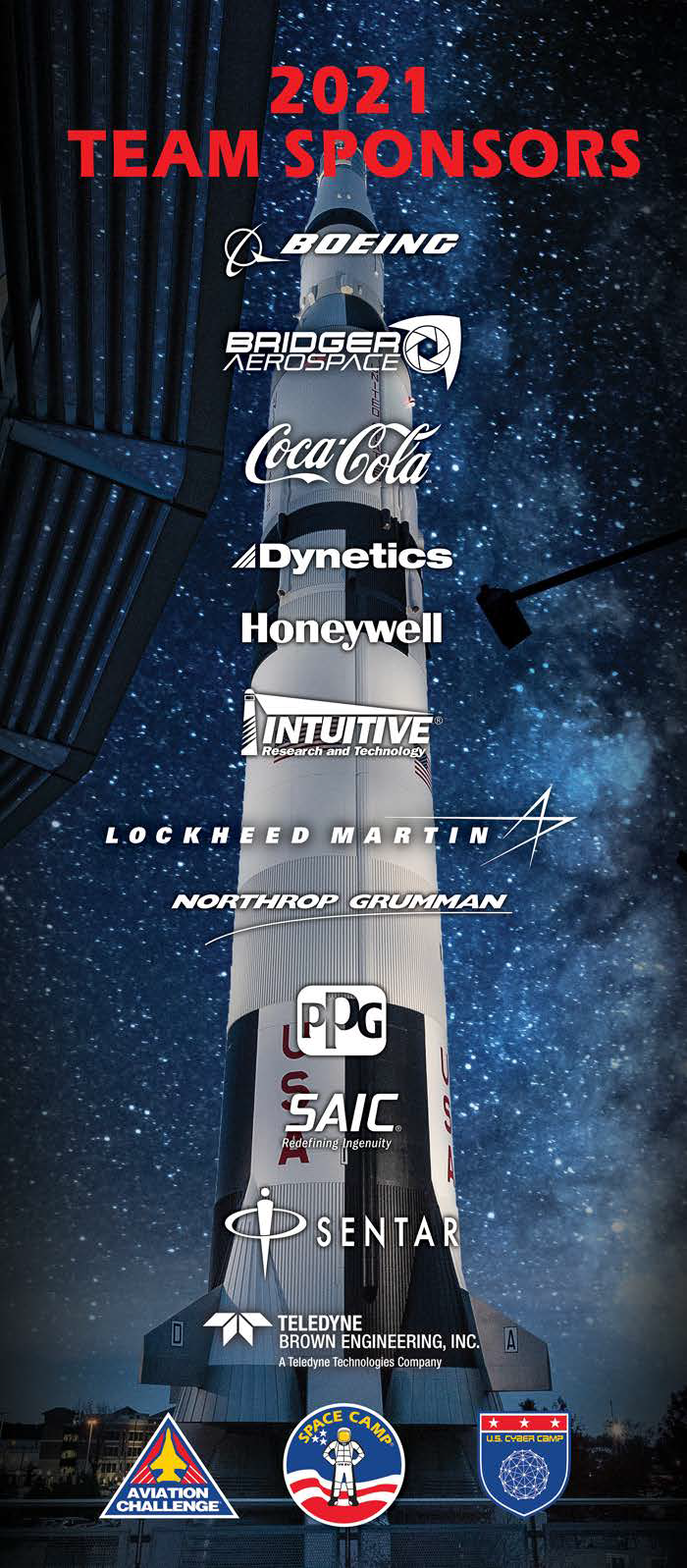Visitors to the U.S. Space & Rocket Center will find something missing from the Center’s celebrated spaceline. Starting with the wings, then moving to the engines, tail, and fuselage, the Pathfinder orbiter, part of the space shuttle stack displayed for more than 30 years at the Rocket Center, was safely taken to the ground. It was an initial step toward restoring the shine to the world’s only shuttle stack display.
“Our goal is to return this as a point of inspiration and have it looking as good as possible,” said Dr. Kay Taylor, the Center’s vice president of education at a press event. It’s a project expected to take Center officials well into 2023.
According to Louie Ramirez, chief operations officer at the Center, inspections, planning and prep work will consume the remainder of the year and flow into 2022. The restoration and refurbishment include the red iron orbiter frame, solid rocket boosters and external tank. Ramirez said the SRBs and ET will be refurbished in place. Research and options supporting work on the orbiter artifact and construction of an orbiter model are ongoing.
Safety concerns prompted Rocket Center leadership to push forward with this project and outside funding made the move possible. Last year, the Center received a $500,000 matching grant from the U.S. Department of the Interior’s Save America’s Treasures program. The grant, plus generous matching funds from the Sheehy family; Lockheed Martin Corporation; the late Dr. Joyce Neighbors; and The Daniel Foundation of Alabama, enabled work to begin.
“To restore the iconic spaceline, we must raise additional funds,” said Ramirez. He noted that current funding will see the project through its first phase but current estimates suggest another $2.5 million will be required.
To learn more about the Pathfinder project and keep abreast of developments, visit the U.S. Space & Rocket Center Education Foundation’s webpage.
Donor Spotlight – The Sheehy Family, Giving Where Most Needed
The Pathfinder orbiter was so named because it provided a means of preparing for the safe and optimal movement of a real shuttle orbiter. Such test articles advanced NASA’s manned space flight program. A person who supports advancements by showing a path or way forward is also known as a pathfinder. The Sheehy family, represented by donors Matt and Tim Sheehy, epitomizes the term professionally and personally.
In their youth, both men attended camp programs at the Rocket Center and both acknowledged the positive impact of Space Camp and Aviation Challenge. In making generous gifts of $250,000 each, the brothers thoughtfully designated funds to be used where most needed. Between the pandemic and safety-sensitive capital projects, “need” had never been more pronounced at the Center. Their leadership gifts truly represented a godsend.
On a professional basis, Matt Sheehy’s career reflects one of the Rocket Center’s focus areas: energy. As president of Tallgrass Energy based in Leawood, Kansas, this Space Camp alumni guides a strong portfolio of services providing long-term, sustainable value to stakeholders. Tallgrass Energy owns and operates more than 8,300 miles of natural gas pipeline, more than 850 miles of crude pipeline, and more than 350 miles of water pipeline across a broad portion of the U.S. The company also has one of the industry’s leading water reclamation programs situated in close proximity to producers.
“The energy business is in transition,” said Matt. He noted fossil fuels, “while necessary threads of our energy fabric,” are being supplemented by wind, solar and other alternative resources. “New technologies, lower manufacturing costs and regulations are propelling us toward a clean energy future.” He added that children who enjoy math and engineering, and who have entrepreneurial drive will find many opportunities in supporting a cleaner, greener, technologically advanced infrastructure. “A cleaner environment and a planet which we all can enjoy for many millennia is the ultimate outcome.”
For Matt Sheehy, personal philanthropy is a tool to advance societal initiatives. “Space Camp is such a wonderful environment to encourage creativity, innovation, learning and inclusion. Its preservation is critical to the nation’s future leaders and innovators.”
Tim Sheehy is chief executive officer and an active pilot at Bridger Aerospace. Bridger Aerospace is an aerial firefighting service based in Belgrade, Montana and the only full-spectrum aerial firefighting service provider in the United States. Bridger operates best in-class Type 1 Air Attack platforms, Single Engine Air Tankers, CL-415EAF Water Scoopers, Unmanned Aerial Vehicles and Counter UAS Systems to facilitate an effective and successful firefighting mission.
Before founding Bridger Aerospace in 2015, Tim served his country as a Navy SEAL. He is a recipient of the Bronze Star with Valor and Purple Heart.
According to Tim, his life and actions aren’t guided by any “grand, overarching vision.” He affirmed, “I simply try to leave each place better than I found it, take care of those people and places that need help, and push the edge of the possible in whatever direction is most advantageous for our free and independent western way of life.”
Beyond the scope of western life, a vibrant and dynamic manned space flight program is a must-have, edge-extending reach for Tim. “Voyaging the stars is the most noble calling for mankind, and it’s imperative that a force for good lead the way in that journey, for we have no idea who we could meet along the way.” Tim Sheehy attended both Space Camp and Aviation Challenge programs.
